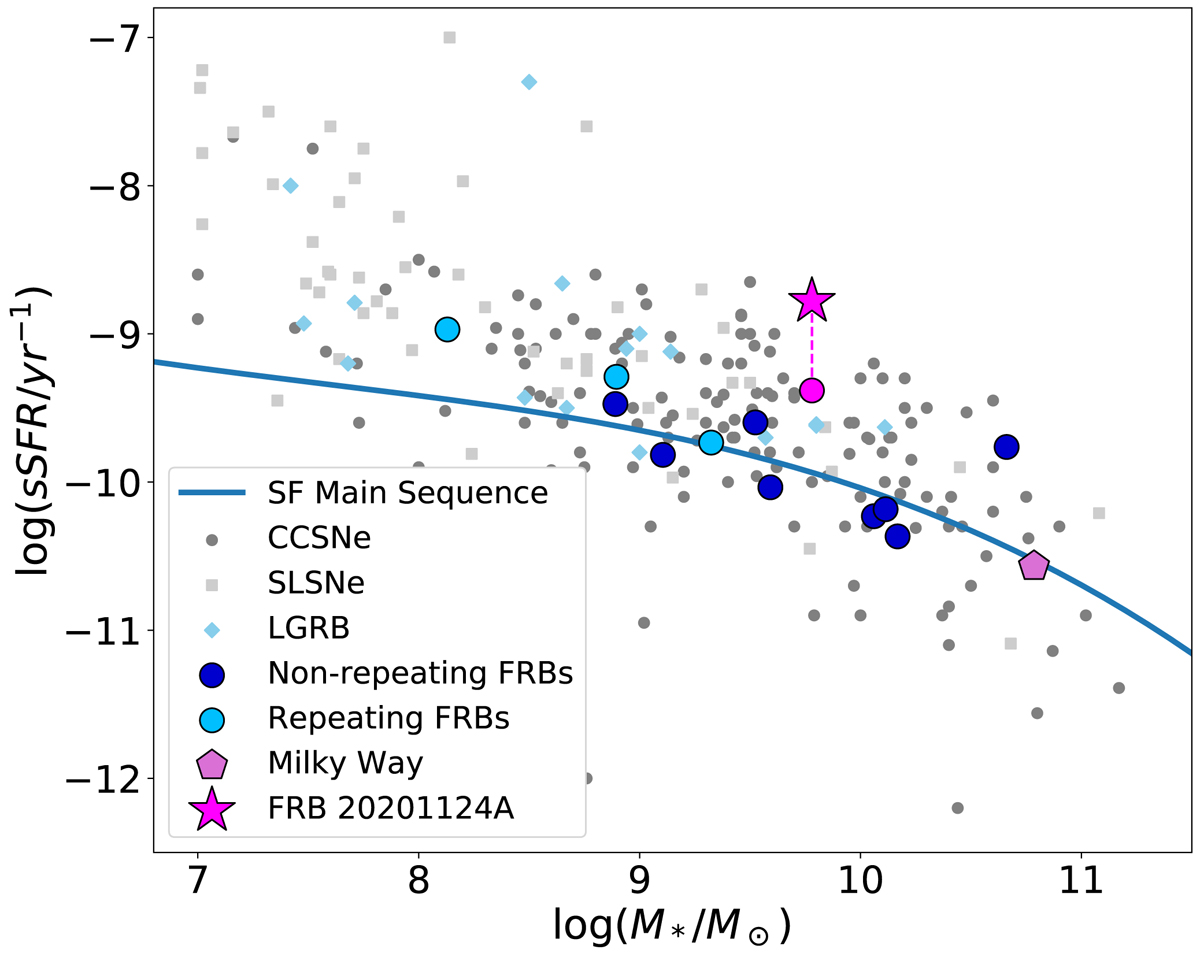Fig. F.1.

Download original image
Specific SFR (SFR normalized to the total mass of the galaxy) of FRB 20201124A (magenta star), other repeating FRBs (light blue circles), non-repeating FRBs from Heintz et al. (2020) (dark blue circles), and our own Galaxy (light purple pentagon; Licquia & Newman 2015). For FRB 20201124A we display the specific SFR derived from radio observations (Appendix A) with a magenta star, and a dashed line connects this value to the magenta circle representing the specific SFR derived from optical spectroscopy (Appendix E and Fig. F.2). We also display the populations of other astrophysical transients for reference by including the low redshift (z < 0.3) populations of long gamma-ray bursts (LGRBs; small blue diamonds), core-collapse supernovae (CCSNe; small gray circles), and superluminous supernovae (SLSNe; small gray squares) from Taggart & Perley (2021). These values are compared to the low redshift (z < 0.05) star-forming main sequence from Saintonge et al. (2016), displayed by a solid line. Our object is located well above the SF main sequence, above which galaxies have enhanced SF efficiencies.
Current usage metrics show cumulative count of Article Views (full-text article views including HTML views, PDF and ePub downloads, according to the available data) and Abstracts Views on Vision4Press platform.
Data correspond to usage on the plateform after 2015. The current usage metrics is available 48-96 hours after online publication and is updated daily on week days.
Initial download of the metrics may take a while.


